The concept of a circular economy has gained significant traction in recent years as a promising solution to the challenges of resource depletion and environmental degradation. Unlike the traditional linear model of "take-make-dispose," the circular economy aims to keep resources in use for as long as possible, extract their maximum value, and minimize waste generation. In this article, we will explore the principles of the circular economy, its benefits, and real-world examples that demonstrate its potential to transform resource management.
Closing the Loop
Closing the Loop is a fundamental principle of the circular economy that emphasizes the importance of designing products and systems in a way that enables materials to be recycled, reused, or repurposed at the end of their life cycle. This principle aims to eliminate the concept of waste and ensure that resources remain in circulation for as long as possible.

In a traditional linear economy, products are manufactured, used, and then discarded as waste. However, in a circular economy, the goal is to close this loop by creating a continuous flow of materials through various cycles of use. This is achieved through strategies such as product design for disassembly, where products are designed with the intention of easy disassembly to facilitate the separation and recycling of materials.
By closing the loop, businesses can minimize waste generation, reduce the consumption of virgin resources, and decrease their environmental impact. For example, a company may design electronic devices with modular components that can be easily replaced or upgraded, extending the lifespan of the product and reducing the need for new manufacturing. At the end of the product's life, these components can be recovered and reused or recycled to create new products, minimizing waste sent to landfill.
Closing the Loop not only contributes to resource conservation but also presents economic opportunities. It encourages the development of recycling and remanufacturing industries, creating new markets and jobs. Additionally, it reduces the dependence on finite resources and helps build a more resilient and sustainable economy.
By embracing the concept of Closing the Loop, businesses can transform their operations and supply chains to become more sustainable and circular. They can rethink product design, establish take-back systems, collaborate with recycling partners, and incorporate recycled materials into their manufacturing processes. By doing so, they contribute to a more circular economy, where resources are used efficiently, waste is minimized, and environmental impact is reduced.

The circular economy emphasizes the importance of designing products and systems with the intention of recycling, reusing, or repurposing materials at the end of their life cycle. By adopting innovative approaches such as product design for disassembly, remanufacturing, and the use of renewable materials, companies can reduce waste and extend the lifespan of products. For instance, Philips, a leading electronics company, introduced a circular economy model for lighting by offering a service where they retain ownership of the lighting fixtures and are responsible for maintenance and recycling.
Resource Efficiency
Resource efficiency is focuses on optimizing the use of resources throughout their life cycle. It involves minimizing resource inputs, maximizing the value derived from those resources, and reducing waste and emissions.

In a linear economy, resources are often used inefficiently, leading to excessive extraction of raw materials, high energy consumption, and significant waste generation. However, resource efficiency aims to change this by promoting a more sustainable approach to resource management.
One aspect of resource efficiency is reducing resource inputs by using fewer materials, energy, and water in production processes. This can be achieved through various strategies, such as implementing energy-efficient technologies, adopting lean manufacturing practices, and optimizing supply chains to reduce transportation and packaging waste. By minimizing resource inputs, businesses can reduce their environmental footprint and enhance their operational efficiency.
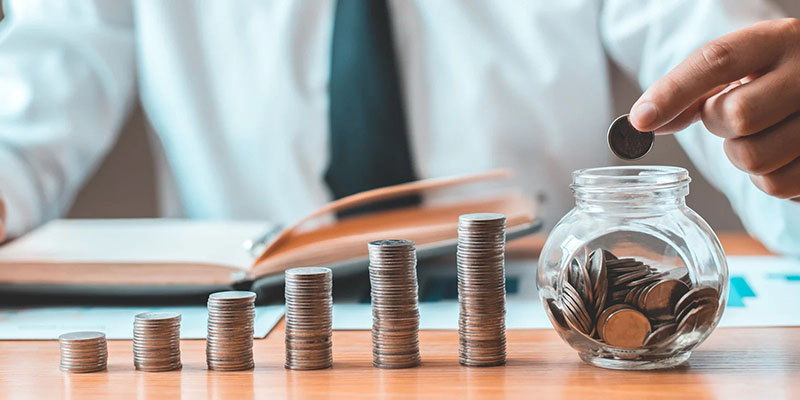
Another aspect of resource efficiency is maximizing the value derived from resources. This involves designing products with longer lifespans, promoting reuse and repair, and creating business models that encourage sharing and access over ownership. For example, companies can implement product-as-a-service models, where customers pay for the use of a product rather than owning it outright. This encourages product longevity and reduces the overall demand for resources.
Resource efficiency also encompasses waste reduction and recycling. By implementing effective waste management systems and adopting circular practices, businesses can recover and recycle materials, diverting them from landfill and reintroducing them into the production cycle. This reduces the need for virgin resources and minimizes environmental impact.

By embracing resource efficiency, businesses can achieve several benefits. Firstly, it helps reduce costs by optimizing resource use and minimizing waste. By using fewer resources and reducing waste disposal expenses, businesses can improve their bottom line. Secondly, resource efficiency enhances competitiveness by fostering innovation and enabling the development of more sustainable products and services. Customers are increasingly demanding environmentally friendly products, and businesses that can meet these demands gain a competitive edge in the market. Lastly, resource efficiency contributes to environmental sustainability by reducing resource extraction, conserving energy, and minimizing waste and pollution.
In a circular economy, the focus is on extracting maximum value from resources by optimizing their use. This involves adopting practices such as energy efficiency, reducing material waste, and implementing closed-loop supply chains. IKEA, the Swedish furniture giant, is committed to using sustainable materials and minimizing waste. They have implemented a circular approach by designing products that can be easily disassembled and repaired, as well as sourcing materials from renewable and recycled sources.
Collaboration and Innovation
Resource Collaboration and Innovation emphasizes the importance of collaboration among stakeholders and the fostering of innovative solutions to resource management challenges. It recognizes that no single organization can address complex sustainability issues alone and that collaboration is essential for achieving a more circular and sustainable economy.
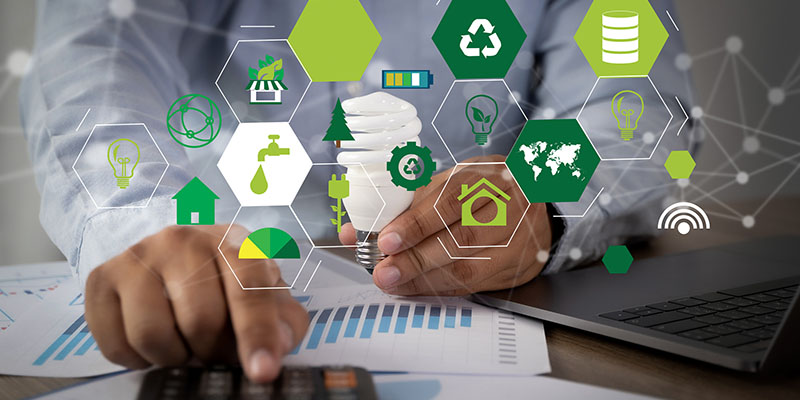
In the context of the circular economy, resource collaboration refers to partnerships and cooperation among businesses, governments, academia, and civil society organizations to share knowledge, resources, and expertise. It involves breaking down traditional silos and working together towards common goals such as resource efficiency, waste reduction, and the development of innovative solutions.
Resource collaboration can take many forms. It may involve collaboration within supply chains, where companies work together to optimize resource use, share best practices, and jointly develop innovative technologies or business models. Collaboration can also extend beyond supply chains to include cross-sector partnerships, where organizations from different industries collaborate to address shared challenges.

By collaborating, organizations can pool their resources, knowledge, and expertise, leading to more efficient and effective solutions. For example, in the fashion industry, various brands and retailers have formed collaborations to establish recycling and take-back programs, enabling the recycling and reuse of clothing materials on a larger scale. This collaborative approach enables the sharing of infrastructure, technologies, and best practices, making it more economically viable and environmentally impactful.
Resource collaboration also fosters innovation. By bringing together different perspectives, skills, and resources, collaboration creates an environment conducive to the development of new ideas and solutions. For instance, in the field of renewable energy, collaborations between energy companies, research institutions, and government agencies have led to breakthroughs in technologies such as solar and wind power, driving the transition to a more sustainable energy system.

In addition to collaboration, resource innovation is crucial for achieving a circular economy. It involves the development and adoption of new technologies, processes, and business models that enable more sustainable resource management. Innovation can occur at various levels, from product design and material selection to recycling and waste management techniques.
For example, in the automotive industry, companies are innovating by designing vehicles with lightweight materials, improving fuel efficiency, and exploring alternative energy sources. They are also developing innovative recycling technologies to recover valuable materials from end-of-life vehicles. These innovations contribute to more sustainable resource use and waste reduction.
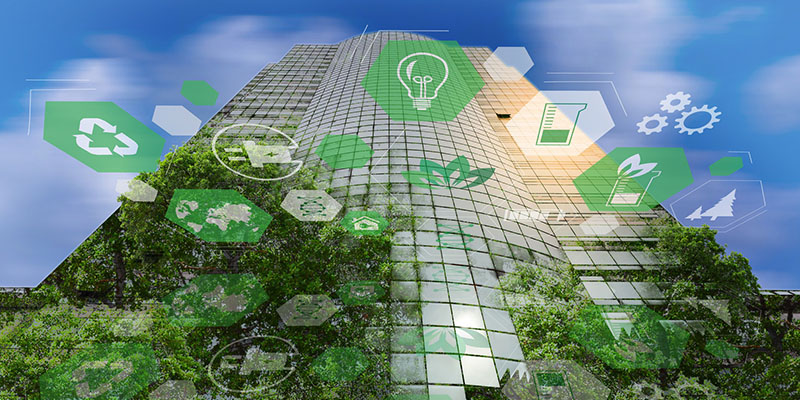
Resource collaboration and innovation are essential for driving the transition to a circular economy. By working together and fostering a culture of innovation, organizations can overcome challenges, discover new opportunities, and accelerate the adoption of circular practices. They can develop innovative products, services, and business models that create value from waste, reduce resource consumption, and minimize environmental impact.
The circular economy encourages collaboration across industries and sectors to create synergies and maximize resource utilization. By fostering partnerships and sharing best practices, companies can develop innovative solutions that promote circularity. For example, the Ellen MacArthur Foundation's Circular Economy 100 program brings together leading businesses, innovators, and policymakers to drive the transition to a circular economy. Collaborative initiatives like this facilitate knowledge exchange and accelerate the adoption of circular practices.
Waste-to-Value
A key principle of the circular economy is the transformation of waste into valuable resources. Recycling and reusing materials are integral to this concept. For instance, Interface, a global flooring manufacturer, implemented a carpet reclamation program where used carpets are recycled into new products. Through this initiative, they have significantly reduced the environmental impact of their products while creating a market for recycled materials.
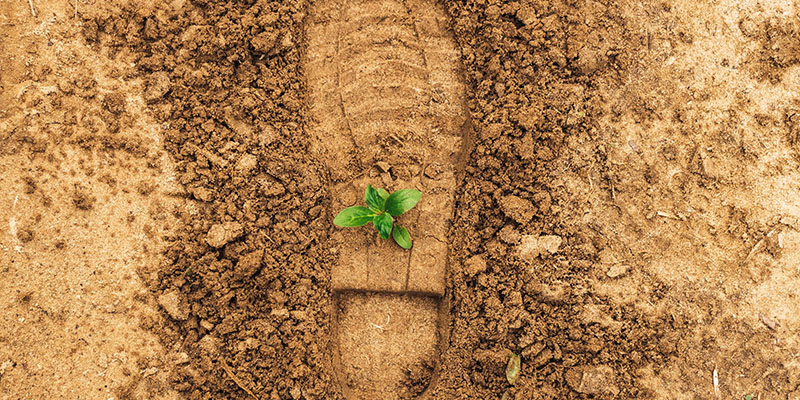
The Waste-to-Value approach aims to shift the traditional linear model of "take, make, dispose" to a more circular and sustainable model where waste is minimized, and resources are kept in circulation for as long as possible. It involves rethinking waste management practices and finding ways to extract value from materials that would otherwise end up in landfills or incinerators.
There are several strategies and technologies that enable the Waste-to-Value concept. One example is recycling, where waste materials are collected, sorted, and processed to create new products or raw materials. Recycling not only reduces the demand for virgin resources but also saves energy and reduces greenhouse gas emissions associated with the extraction and production of new materials.

Another approach is upcycling, which involves transforming waste materials into products of higher value or quality. This process goes beyond traditional recycling by adding value and creativity to the waste materials. For instance, old denim jeans can be upcycled into fashionable bags or accessories, giving them a new life and increasing their value.
Waste-to-Value also encompasses the use of innovative technologies to convert waste into energy. Technologies such as anaerobic digestion and waste-to-energy plants can transform organic waste into biogas or electricity, providing a renewable energy source and reducing the reliance on fossil fuels.
The Waste-to-Value approach has significant environmental and economic benefits. By diverting waste from landfills and incinerators, it reduces the negative environmental impacts associated with waste disposal, such as pollution and greenhouse gas emissions. It also contributes to resource conservation by reducing the need for virgin materials and promoting a more circular economy.
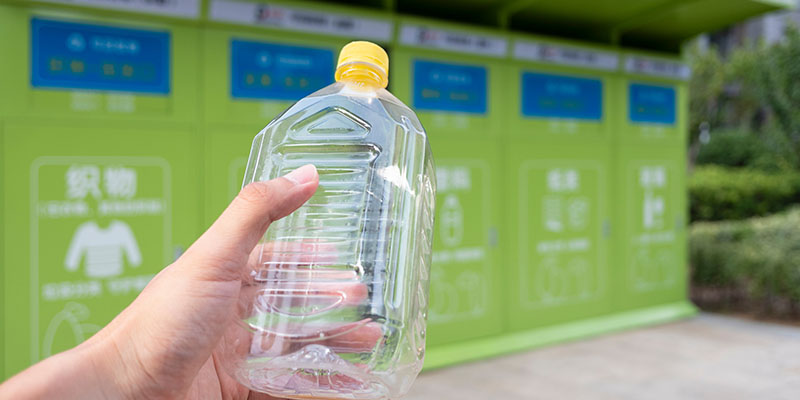
Moreover, Waste-to-Value creates economic opportunities by generating new industries and employment. It opens up possibilities for waste management companies, recycling facilities, and innovative startups to develop and implement solutions for waste recovery and transformation. This not only creates jobs but also stimulates economic growth and drives innovation.
Real-life examples of Waste-to-Value initiatives can be found across various industries. For instance, in the textile industry, companies like Patagonia have implemented programs to collect and recycle worn-out garments, transforming them into new products. In the food industry, initiatives such as composting or anaerobic digestion of food waste are gaining traction, turning organic waste into valuable compost or biogas.
Economic Opportunities
Economic opportunities within the context of the circular economy refer to the potential for generating new businesses, jobs, and economic growth through sustainable and circular practices. By transitioning from a linear model of production and consumption to a circular model, economic opportunities emerge at various stages of the value chain.
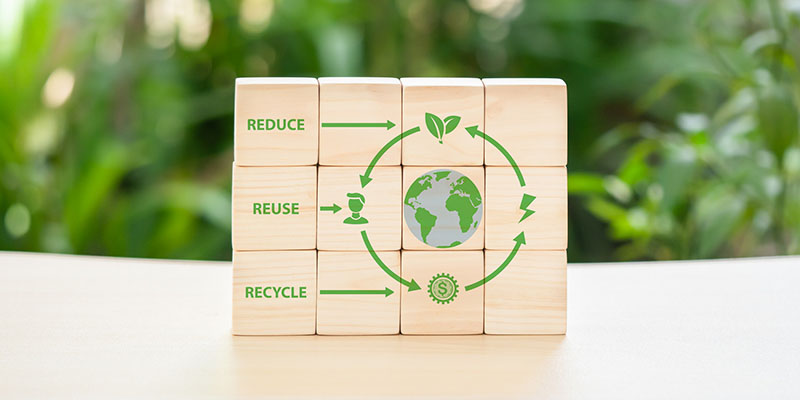
- Resource Recovery and Recycling
The shift towards a circular economy opens up opportunities for waste management companies, recycling facilities, and innovative startups to collect, sort, and process waste materials. This creates jobs and businesses in areas such as recycling technologies, waste collection and sorting systems, and the development of new recycling processes. Additionally, it promotes the growth of secondary raw material markets, providing opportunities for businesses to manufacture products using recycled materials.
- Product Design and Innovation
Designing products with circularity in mind requires innovative thinking and the development of new business models. Companies can explore opportunities in product redesign, incorporating principles such as durability, modularity, and ease of repair. This can lead to the development of new product lines, remanufacturing businesses, and service-oriented models such as leasing or sharing platforms.
- Resource Optimization and Efficiency
The circular economy encourages businesses to optimize resource use and reduce waste generation. This opens up opportunities for businesses to adopt resource-efficient technologies and practices, leading to cost savings, improved operational efficiency, and increased competitiveness. For example, implementing energy-efficient processes, water conservation strategies, and materials substitution can result in reduced costs and environmental impact.
- Reverse Logistics and Circular Supply Chains
Implementing reverse logistics systems, which involve the collection, refurbishment, and resale of used products, creates economic opportunities for businesses. It allows companies to capture value from returned products, extend product lifecycles, and tap into the growing market for refurbished or second-hand goods. Reverse logistics also enables businesses to recover valuable materials from end-of-life products, contributing to resource conservation and reducing the need for virgin materials.
- Services and Sharing Economy
The circular economy promotes a shift from product ownership to service-based models. This opens up opportunities for businesses to provide services instead of selling products, such as leasing, rental, or subscription models. It also enables the growth of sharing economy platforms, where individuals can share resources or access goods and services on a temporary basis. These models create new revenue streams and business models while reducing the overall demand for resources.
- Job Creation and Skills Development
The transition to a circular economy requires a skilled workforce to implement and drive sustainable practices. This creates opportunities for job creation and skills development in areas such as waste management, recycling, sustainable design, renewable energy, and circular supply chain management.



Additionally, the circular economy fosters innovation and entrepreneurship, providing opportunities for individuals to start their own businesses and develop sustainable solutions.
The circular economy presents significant economic opportunities, including job creation and innovation. According to the World Economic Forum, transitioning to a circular economy could generate $4.5 trillion of additional economic output by 2030.

In the Netherlands, the Park 20|20 business park showcases the principles of the circular economy, with buildings designed for disassembly, renewable energy generation, and water recycling. This development has attracted companies seeking to operate in a sustainable and resource-efficient manner, contributing to economic growth and job creation.
The transition to a circular economy
Not only is it an environmental imperative but also a strategic opportunity for businesses and societies worldwide. The examples discussed in this article highlight the transformative potential of the circular economy in redefining resource management. By adopting circular practices, businesses can reduce waste, conserve resources, drive innovation, and create economic opportunities.
Embracing the circular economy requires a collective effort from businesses, governments, and consumers. Governments play a crucial role in creating a supportive policy environment that incentivizes circularity, such as implementing regulations that promote recycling and the use of recycled materials. Businesses need to integrate circular thinking into their strategies, from product design and production to supply chain management and end-of-life solutions. Consumers, on the other hand, have the power to drive demand for sustainable products and services, encouraging companies to adopt circular practices.

The challenges and benefits
The transition to a circular economy is not without challenges. It requires collaboration, innovation, and investment in new technologies and infrastructure. However, the benefits are significant. Studies estimate that the global adoption of circular economy principles could generate trillions of dollars in economic value and create millions of jobs by 2030.
Furthermore, the circular economy offers a pathway to achieving sustainable development goals, including the reduction of greenhouse gas emissions, preservation of natural resources, and the promotion of social inclusivity. By decoupling economic growth from resource consumption, the circular economy presents a more sustainable and resilient model for future generations.
Conclusion
As we move forward, it is essential for businesses, governments, and individuals to embrace the principles of the circular economy and work together to create a more sustainable and prosperous future. By reimagining resource management, optimizing resource use, and promoting circular practices, we can build a world where waste is minimized, resources are conserved, and economic growth is aligned with environmental and social well-being.



